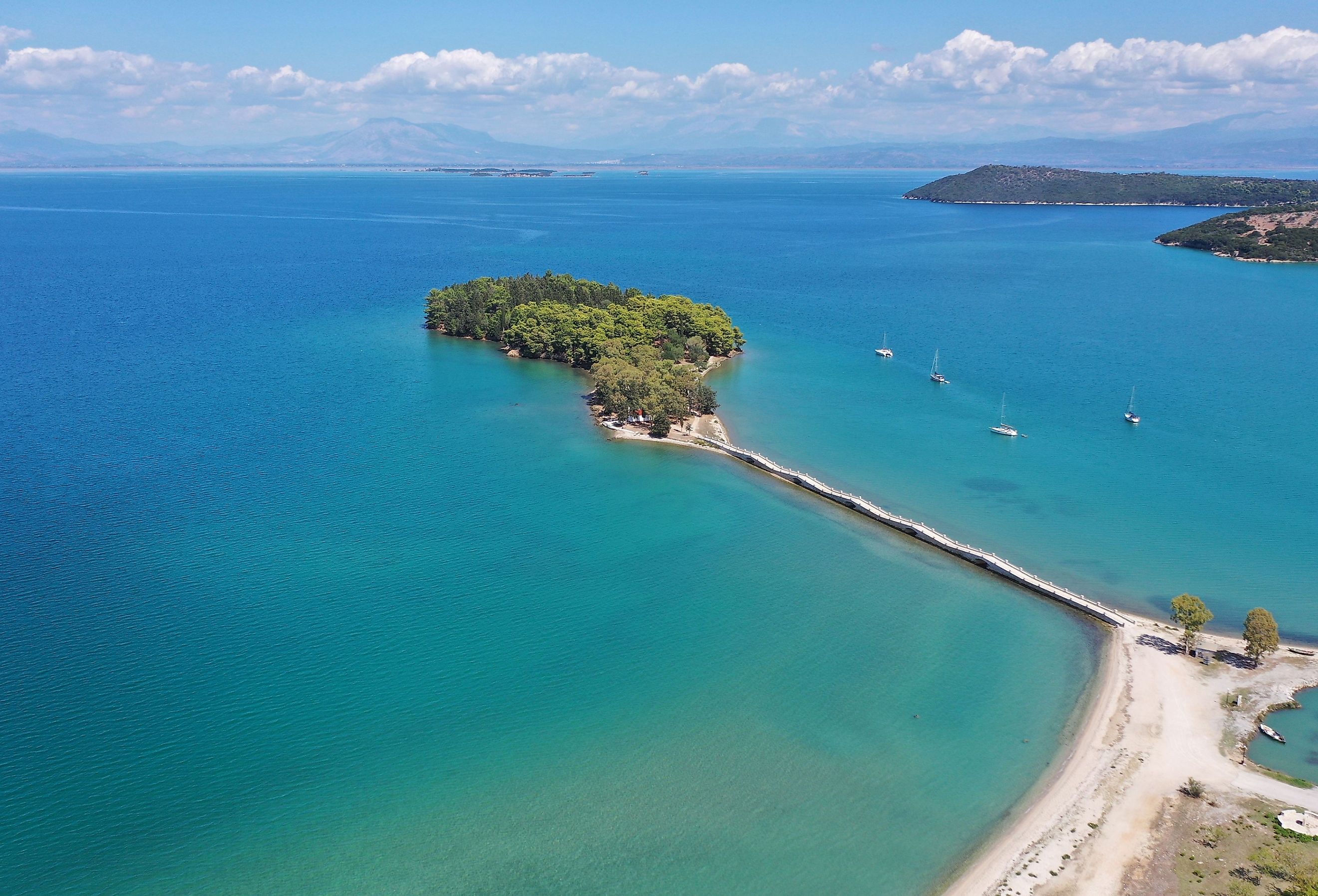
Amvrakikos Gulf
A gulf is a body of water with a deep inlet surrounded by land with a narrow mouth to feed into a larger body of water. The Amvrakikos Gulf, also known as the Ambracian Gulf, is a gulf in northwestern Greece that outlets into the Ionian Sea and the greater Mediterranean Sea. The gulf is fed by the Louros and Arachthos Rivers. It is one of the largest enclosed gulfs in Greece and has been important politically and ecologically to the region throughout Greece's history.
Location and Geography
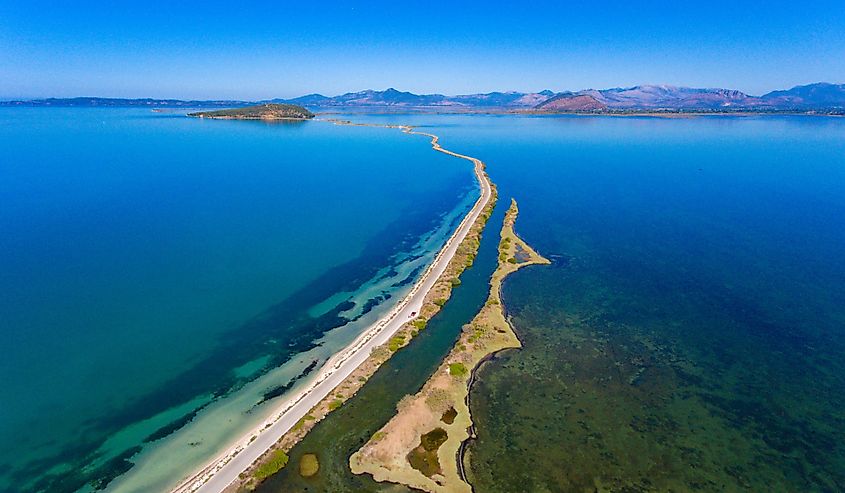
The Amvrakikos Gulf is roughly 25 miles long and 9 miles wide with the outlet into the Ionian Sea being 2,297 feet wide. It is a relatively shallow gulf with an average depth of 72 feet and a max depth of 200 feet. The northern coasts of the gulf break into large marshes with brackish waters where salt and fresh water mix together. There are also many lagoons close to the gulf, separated by large sand banks.
Climate
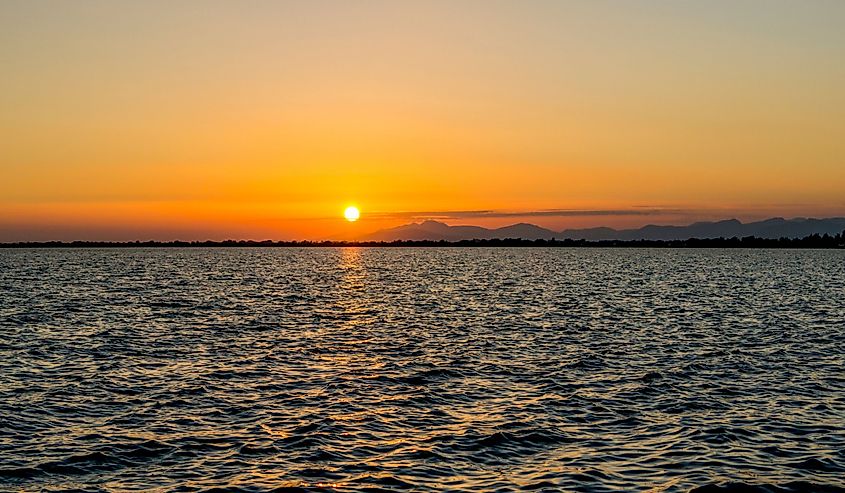
The Amvrakikos Gulf has a Hot Summer Mediterranean climate. The Mediterranean Climate is common to areas around the Mediterranean Sea and consists of hot, dry summers and mild, wet winters. The subtype Hot Summer refers to the temperature of the region during the summer being hotter than other Mediterranean regions. The temperatures around the Amvrakikos Gulf vary throughout the year, ranging from the low 40s in January to 85℉ in August. The temperature of the water in the Gulf ranges from the high 50s to about 78℉ in the hottest month of August. Most of the yearly precipitation comes during the winter and spring in the form of heavy rainfall and occasional snow.
Wildlife
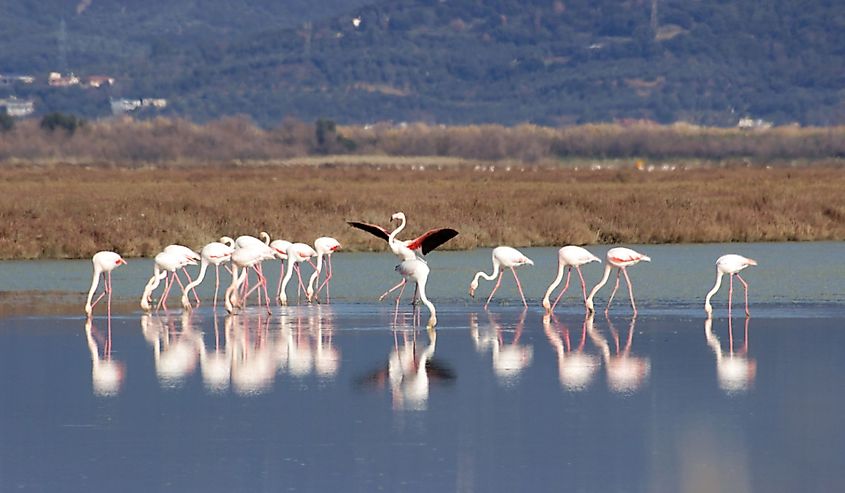
There are, according to Greek government surveys, around 100,000 species of flora and fauna in the Amvrakikos Gulf. The gulf is well known for having a glut of grey mullet fish, sole fish, eels, and a wide variety of shrimp. There are also loggerhead sea turtles and bottlenose dolphins that frequent the area. There are between 250 and 300 species of birds that call the gulf home, 75 of which are rare. The vulnerable Dalmatian pelican lives among the lagoons which is an important space for breeding. The gulf also has many seagrass meadows on its floor however pollution carried by the two rivers and climate change has damaged them. This caused the European Union (EU) to make it a part of the Life Transfer project, dedicated to fighting climate change and rebuilding biodiversity.
Islands
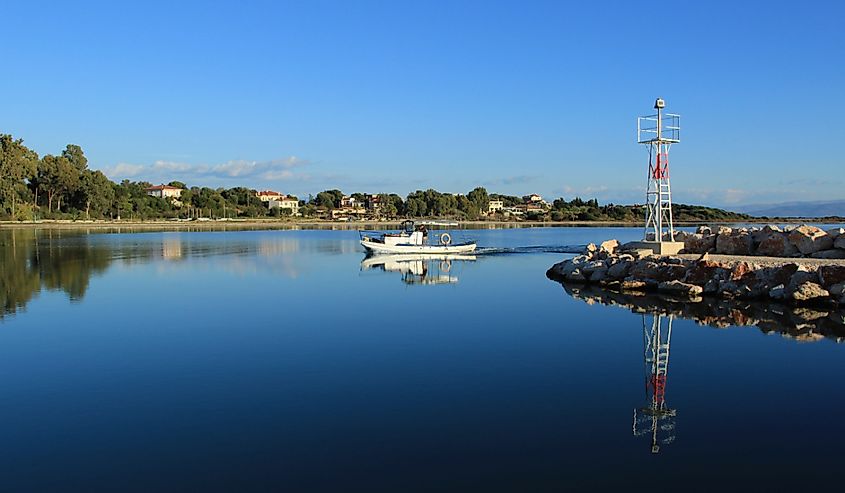
There are very few islands in the Amvrakikos Gulf and most of them are small patches of wilderness. However, there are two notable islands. First, close to the center of the gulf is Vouvalos Island, a mix of small forests, rocky rises, and sand. It is currently a private island and can even be purchased. The second island is to the southeast of Vouvalos Island, it is Kephalos Island and is smaller than Vouvalos but has similar terrain. It is mostly used as a scenic view spot for tourists.
History
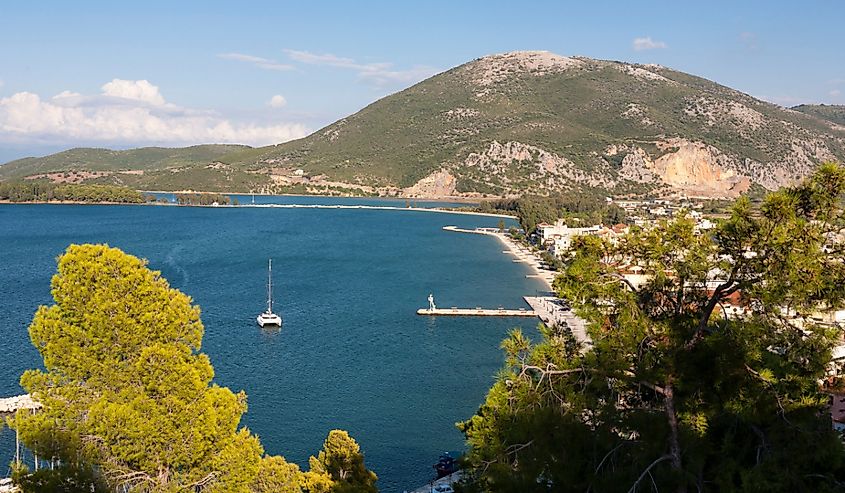
Amvrakikos Gulf also has another historical name, Actium Gulf. It was here that the final civil war of the Roman Republic was fought by the navies of the final two contestants of what had been a generation of wars. On one side was Augustus Caesar, heir to Julius Caesar, and on the other were Marc Antony and Cleopatra VII, rulers of Egypt and rival claimants to Caesar's legacy. In the Battle of Actium, the navies of the two sides met and in a swirl of rams and arrowheads the forces of Augustus, led by Marcus Agrippa, prevailed. In the aftermath, Antony and Cleopatra committed suicide and the wars for Rome ended with Augustus as the first emperor of Rome. Since then, Amvrakikos Gulf has had little historical importance though it has often been used to demarcate Greek borders with foreign powers.
Modern Settlements
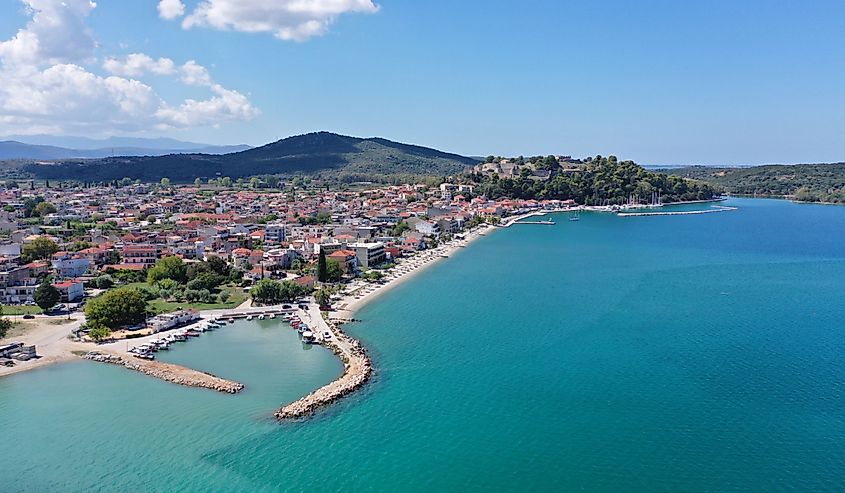
There are three major settlements along the Amvrakikos Gulf alongside the ruins of ancient Actium. The first and largest is Preveza, which sits at the outlet of the gulf. It has a population of just over 31,000 and boasts the only undersea tunnel in Greece, the Akito-Preveza Immersed Tunnel. The tunnel goes under the Amvrakikos Gulf and connects both sides of the Gulf's inlet. The second settlement is Vonitsa, a town of around 4,000 people on the southern bank of the Gulf. It is mostly a beach town and well known for the Venetian Fortress built on the high ground around the town. The final and smallest of the major settlements is Menidi, a small town on the northeastern bank of the Gulf. It is a well-known tourist town for many foreigners due to its quiet atmosphere and beautiful scenery.
Economy
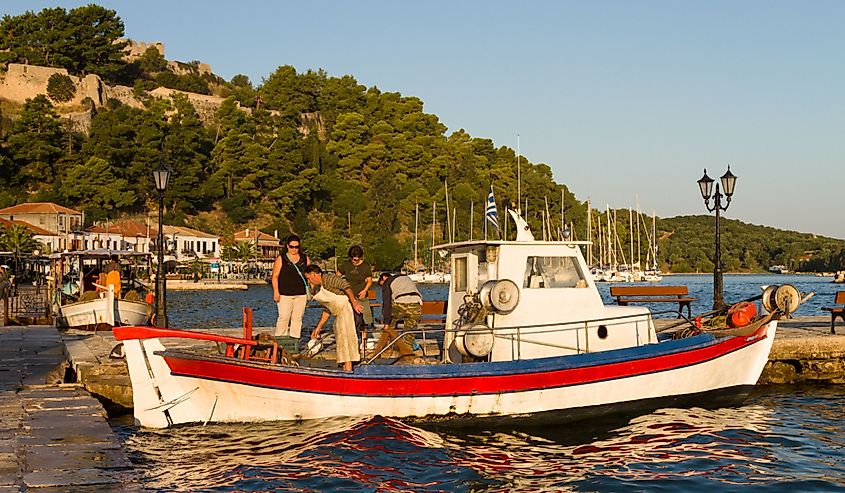
Tourism is a primary driver of the economy of the Gulf. Many people visit the Amvrakikos Gulf and the settlements around it as well as adventuring out to see the wildlife in the northern lagoons and marshes. Many also stay at Preveza as they venture into the Mediterranean Islands, feeding the economy even more. Commercial fishing is also common, especially with shrimp, but this has been a reduction in recent years to protect fish populations. There is also commercial farming that occurs in the area.
Conclusion
Amvrakikos Bay has been a place of monumental historical importance in the past, but today it is a beautiful vacation spot and a frontline hotspot in the fight against climate change and pollution. While the area has sustained ecological damage with losses of aquatic flora and fauna, the European Union is actively taking measures to protect the natural beauty of this important historical and ecological gulf.











